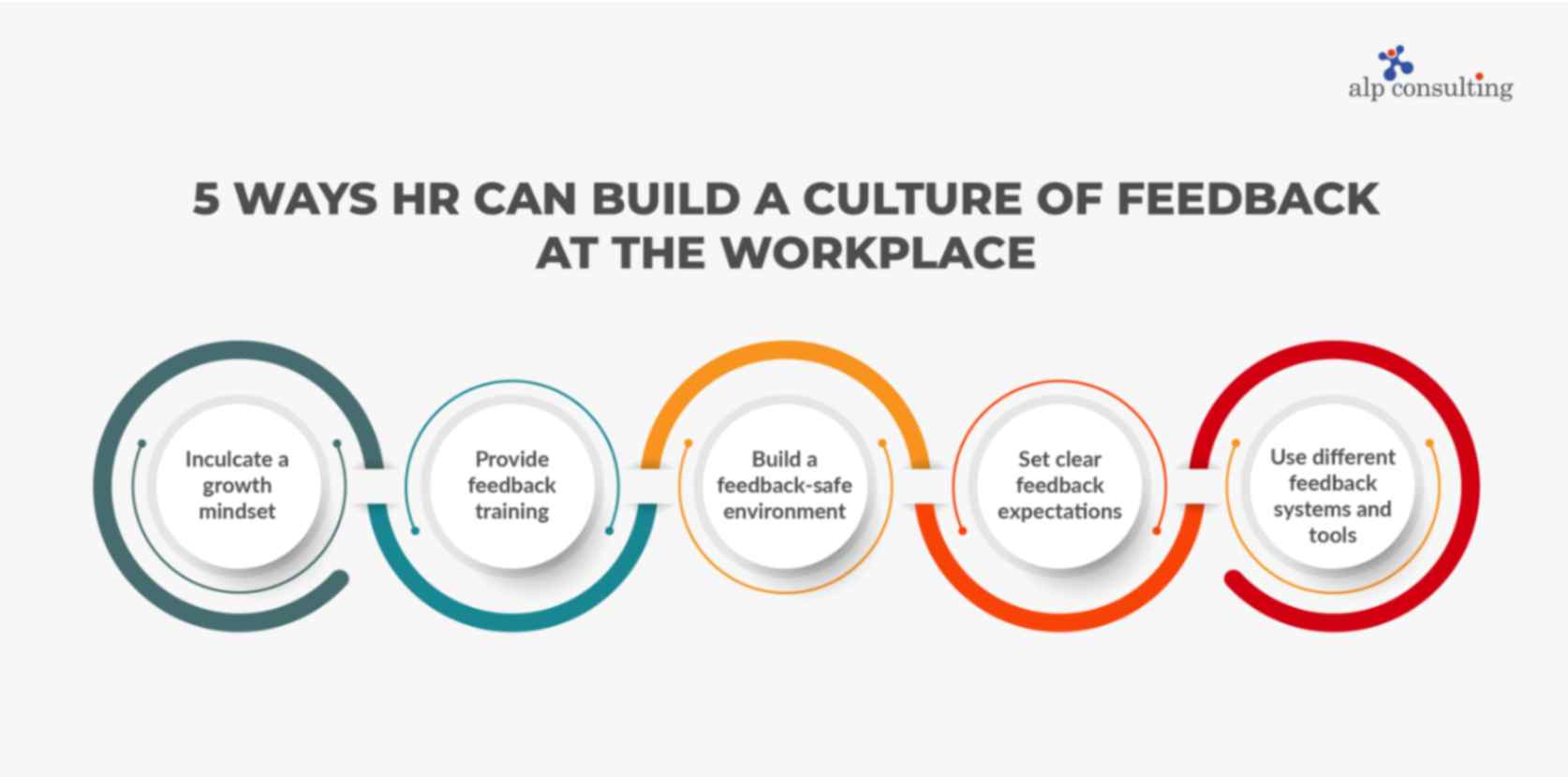
7 Inclusive Ways to Integrate Freelancers into Your Workforce
06/06/2024
Manual Payroll vs. Automated Payroll System in 2024
13/06/2024Feedback is crucial to ensure everyone works in a workplace that supports collaboration, avoids confusion and minimizes dissent and dissatisfaction. People at the workplace will have more clarity and less mistrust at work and managers will know exactly what they need to do to improve productivity.
It’s a win-win situation for everyone involved, the HR, managers, employees and the organization too. How can we build a feedback culture at the workplace, and is it difficult? Before we answer this question, let’s look at these benefits of a feedback culture at the workplace in little more detail now.
What are the Benefits of Building a Culture of Feedback at the Workplace?
Building a culture of feedback at the workplace has several benefits. Some of them are:

1. Employee engagement
Frequent feedback can help employees stay engaged in their jobs and perform at an optimal level.
2. Employee development
Feedback provides insights and helps with career development and adds value to learning programs.
3. Morale
Positive feedback raises the morale of employees and makes them more committed to their work.
4. Collaboration
Feedback boosts collaboration at the office, reducing the time taken to solve a problem or arrive at a decision.
5. Communication
Feedback fosters openness and transparency, and when this is also recorded correctly, it leads to better communication.
6. Trust
Feedback creates a culture of trust, which helps boost the reputation of the company within it and soon outside its walls too.
7. Productivity
Feedback generally leads to increased productivity and better results.
8. Retention
Feedback helps attract the right talent and retain them for long, improving the company’s bottom line.
5 Ways HR Can Build a Culture of Feedback at the Workplace

1. Inculcate a growth mindset
People who have a growth mindset always see opportunities for learning everywhere. They use feedback to understand what is right and wrong and grow over a period. There are many ways in which you can inculcate a growth mindset in your employees so that they automatically seek, understand and respect feedback.
First, you could make it a part of the hiring process by gauging if a candidate has the mettle to prove himself, go beyond work to better his career and learn from his mistakes. Second, you could offer financial assistance to people to learn and grow in their careers. Third, you can recognize and reward people. People need not be their best to win recognition. Recognize and reward continuous growth.
2. Provide feedback training
To develop a culture of feedback, people need to be trained in how to offer constructive feedback, communicate it effectively, how to receive it gracefully and how to implement it well in their roles at work. How-to videos and training sessions that test employees and demand a minimum percentage to clear them also help with feedback training. Leaders also must be trained to accept feedback from their subordinates, and check with them on how to improve the work culture and employee engagement levels.
3. Build a feedback-safe environment
Create an environment where everyone can offer feedback safely without being called out. And where everyone feels that their feedback might be implemented without any kind of prejudice against them, if it is in the best interests of the company and ethical. Also, people across organizational levels must be allowed to offer feedback. Feedback must not be viewed as an insult, no matter who it comes from. People must realize that they can only benefit from feedback.
4. Set clear feedback expectations
First, decide and communicate what exactly feedback should look like in your organization. Second, understand who gives feedback and how often it occurs. Third, have targets for the feedback system in your workplace. In other words, define what it is trying to achieve. Fourth, find out all the different ways in which feedback can be obtained and pick the least intrusive one among them that. Last, communicate this to everyone and document the process effectively.
5. Use different feedback systems and tools
Give employees the opportunity to give feedback in a way that they’re most comfortable and from anywhere and at any time. Pick any one of the feedback systems and stick to using that for your organization. Each of these have their own benefits and one type may be better than the other for a particular kind of feedback and severity.
- Attributed vs. Anonymous
- 1-on-1 vs. 360-Degree Feedback
- Individual vs. Group
- Face-to-Face vs. Written
You can use any of the many different types of employee feedback software that are currently available. These feedback tools allow employees to make notes of feedback given at feedback sessions and even request feedback or fill out surveys.
Conclusion
As Frank A. Clark rightly put it, “Criticism, like rain, should be gentle enough to nourish a man’s growth without destroying his roots.” This is the best quote we could find on feedback, because it embodies all that feedback well and truly is and how it must be given. And we have seen what the benefits of such an approach can be and how to implement such a system at the workplace too. What did you do to grow a feedback culture at your workplace and who were the stakeholders? Tell us in the comments below!
Contact Us For Business Enquiry

Rajkumar Shanmugam
Rajkumar Shanmugam is the Head of HR at ALP Consulting, bringing over 19 years of comprehensive HR leadership experience across India and international markets. His expertise spans talent acquisition, employee relations, performance management, compliance, and HR transformation. Rajkumar has a proven track record of driving people-centric initiatives, enhancing workplace culture, and aligning HR strategy with business goals. With extensive experience in US staffing operations and global mobility, he continues to lead organizational excellence through innovation and employee engagement.




